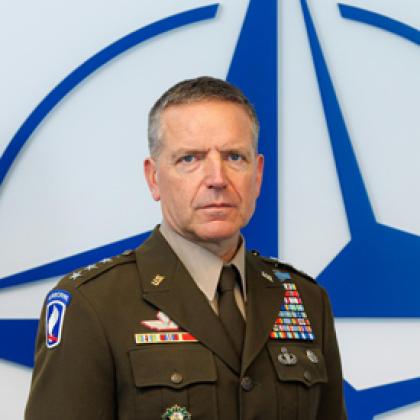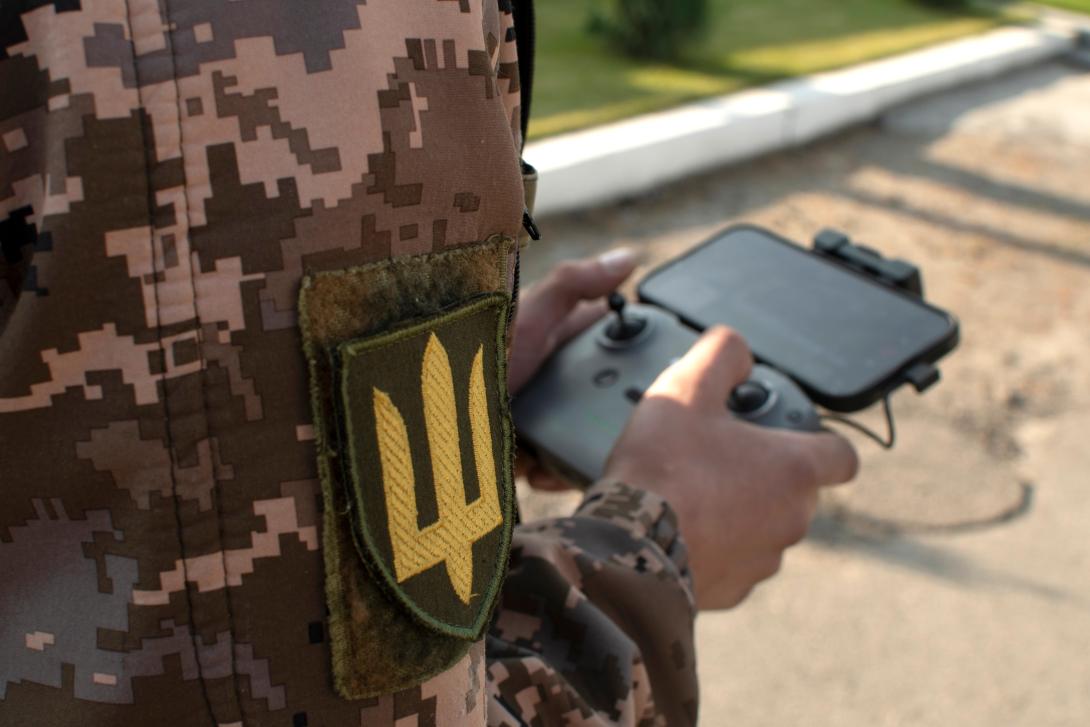Lesson From Ukraine: Algorithms Cannot Replace Mission-Driven Humans
As innovation progresses, no machine or algorithm will replace mission-enabled and free-thinking individuals, said Director of NATO Digital Staff Rear Adm. Nick Wheeler. The director, who is set to leave his NATO post in the coming weeks, was the opening keynote speaker at the TechNet International 2025 conference held in Brussels.
The importance of people cannot be underestimated, Wheeler stressed. “You can put the most incredible technologies in the hands of people, but if they don’t either know how to use it or they’re not empowered to use it in an innovative way, then you’ll never see its full potential.”
A prime example of Wheeler’s point was the attack that took place over the weekend by the Security Service of Ukraine, also known as SSU. The operation, dubbed Spider’s Web, struck more than 40 Russian bombers across at least four different air bases using 117 drones.
“We think they were domestically produced drones, and they were controlled by a mixture of satellite and a bit of GPS and some innovative jamming techniques,” Wheeler said.
The operation destroyed a significant portion of Russia’s nuclear capable strategic bomber fleet.
“They’ve done a mixture of both modern technologies—drones—with some innovative ways to [command and control] around those drones, so we believe each one had an individual pilot,” Wheeler told the audience.
“I was fascinated by the way they did battle damage assessment,” he stated, noting the use of additional drones dedicated to watching the attacks take place. That way, Wheeler said, Ukrainian operators could see which attacks were successful and which required redesignation.
“Although I also can’t help feeling that was half done with a mind to social media and to the news, because it meant they had film that they could put out on the internet, which the messaging of that was absolutely amazing,” he added.
The operation highlighted the key strategic success in the combination of modern innovation and mission-driven human beings.
“Underpinning it all is really old-fashioned military stuff, brilliant operational reception, brilliant covert op to get these things into place. I mean, absolutely stunning operation what they’ve achieved there,” Wheeler stated.
Echoing Wheeler’s statements was Lt. Gen. Andrew Rohling, deputy chair of the NATO Military Committee, who later spoke on NATO’s emerging and disruptive technologies, or EDTs.
“That was clearly a game changer in many ways,” he said of Operation Spider’s Web and on Ukraine’s use of drone warfare.

At some point, the drones we're seeing today in Ukraine won't be emerging and disruptive anymore.
“We’ve seen … autonomous systems, AI targeting, electronic warfare, sensor networks that give you real battlefield impacts, and Ukraine is in many ways leading this effort. As you’ve seen, what they’ve been able to do in terms of production and defense, there’s an action/counteraction, and the speed that they’ve been able to do that action/counteraction has been quite remarkable,” Rohling said.
Ukraine has taught a lesson in development and production, and long lead times within acquisition processes have become obsolete, he added.
Modern technology is rapidly shifting the norms of the battlefield, with drone swarms serving as just one example of a new reality. “All you have to look at is the ability of Ukraine to fight,” Rohling stated, also noting Russia's use of drone warfare.
“[At] one point in time, Russia launched over 400 drones in one of the latest weekend [attacks], so how you counter that and how you keep yourself from firing a $4 million missile at a $40 drone is really moving in the direction of where EDT is [going].”
NATO member states, along with partners and allies must embrace new innovation, Rohling suggested. "At some point, the drones we're seeing today in Ukraine won't be emerging and disruptive anymore."
TechNet International is organized by AFCEA Europe, AFCEA International's European office. SIGNAL Media is the official media of AFCEA International.





Comments